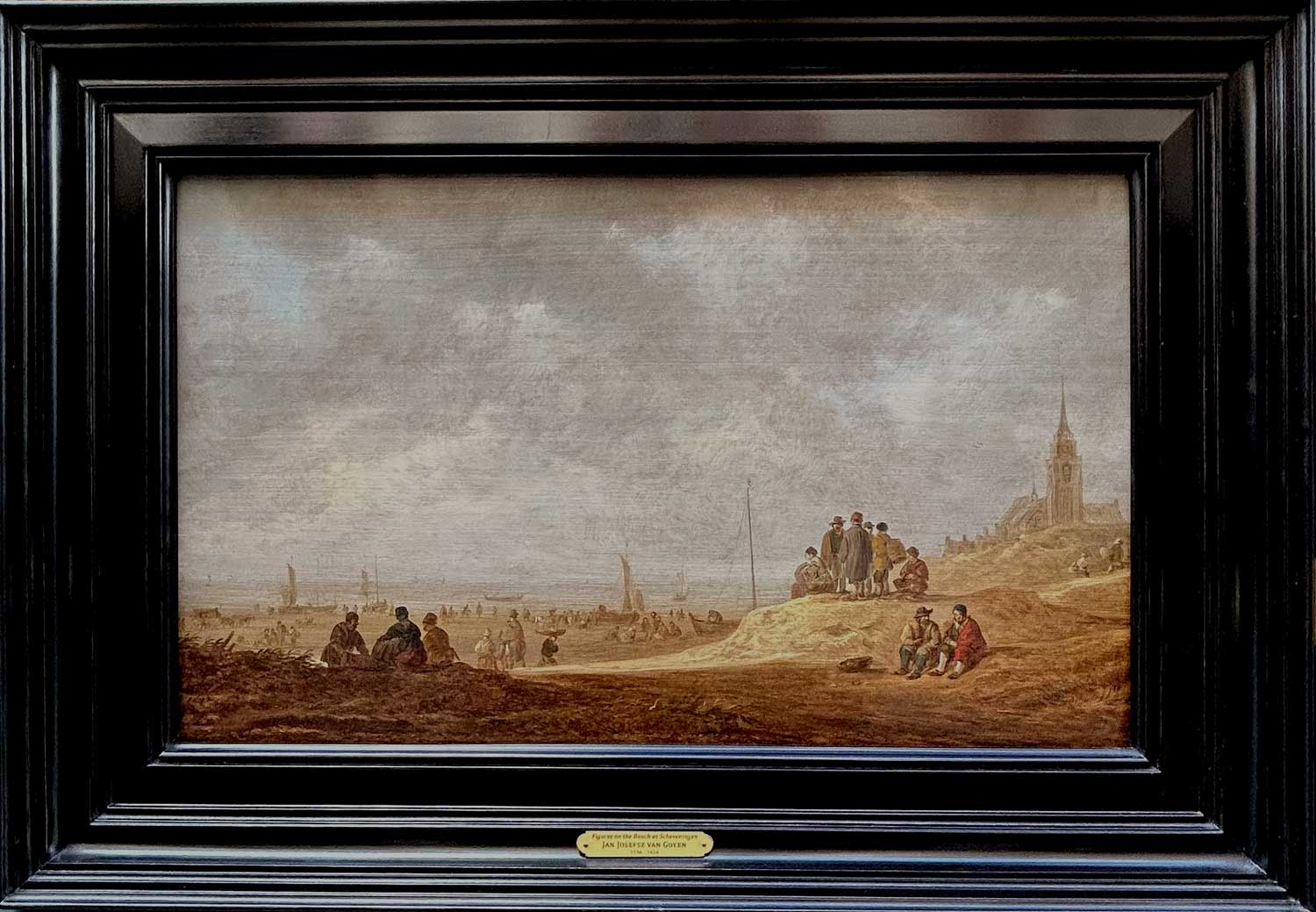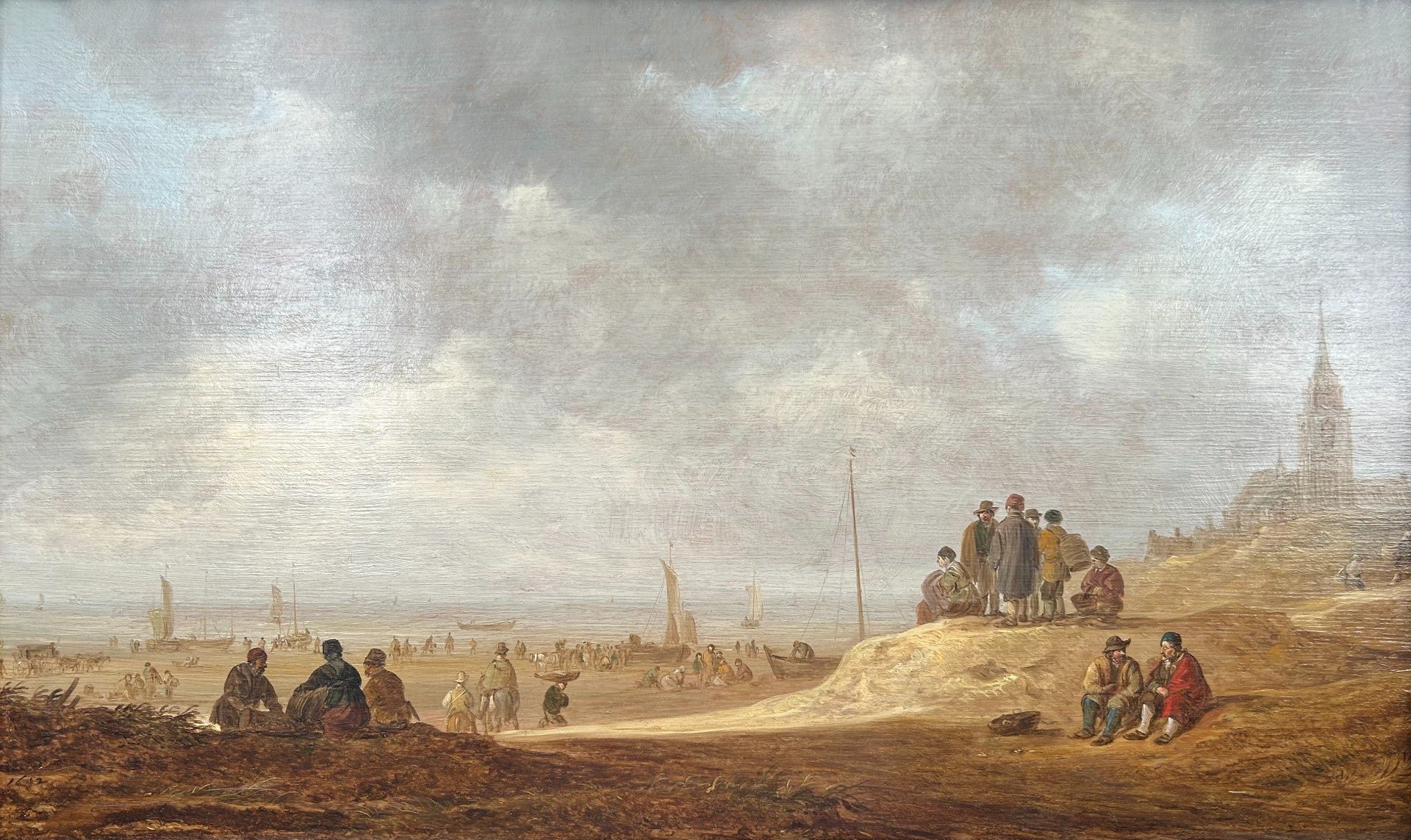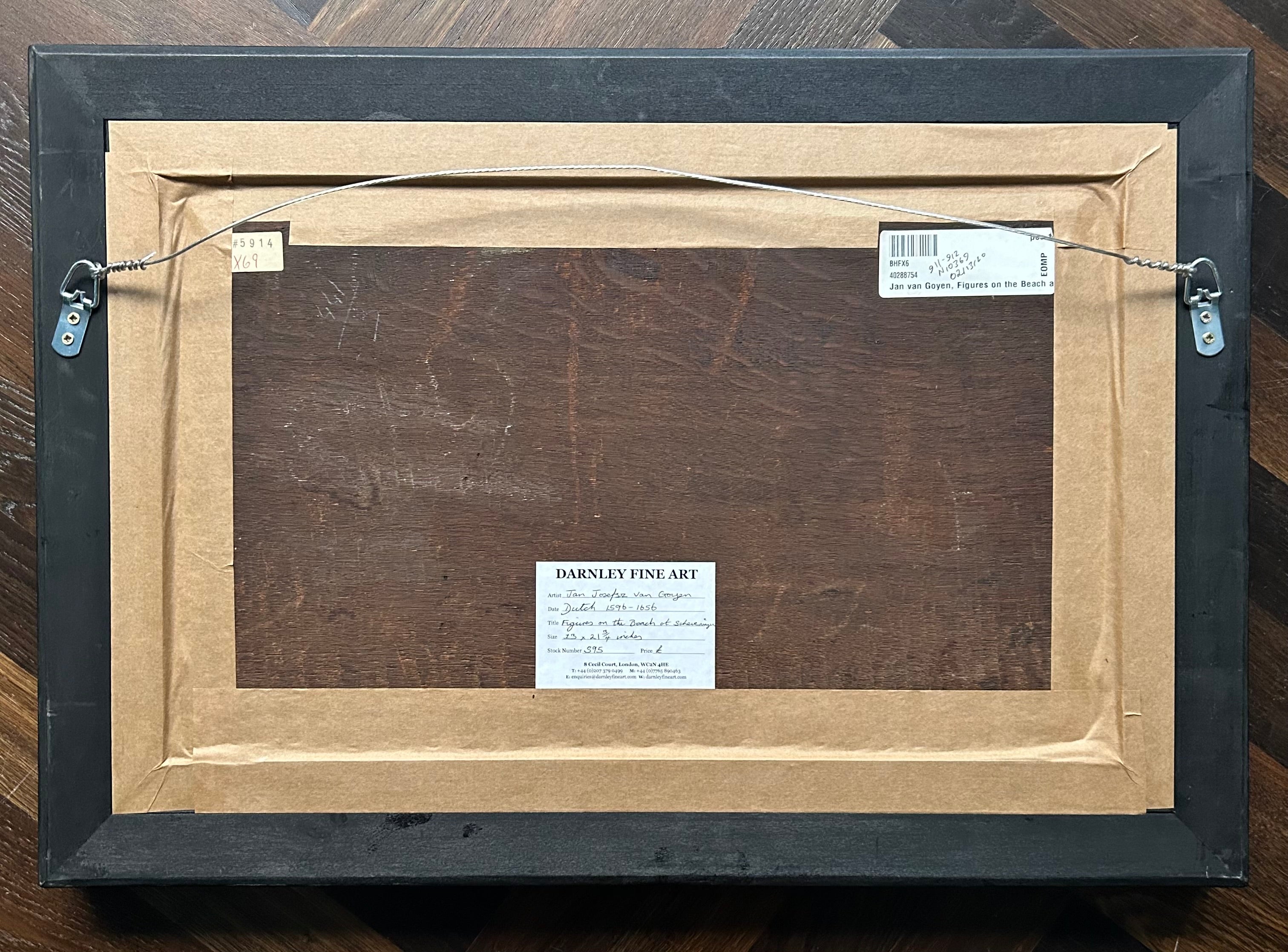

Jan Josefsz van Goyen
Figures on the Beach at Scheveningen
Oil on oak panel, monogrammed and dated '1642' lower left
Image size: 13 x 21 3/4 inches (33 x 55.5 cm)
Ebonised Dutch frame
Provenance
Private Estate
Sotheby's, October 27 1989, lot 69
Christie's, July 7 1972, lot 82
Collection of J.F. van Abbe, 1940
Exhibitions
Oude Kunst in Brabants Bezit, Tilburg, 1948, no.35
Literature
Hans-Ulrich. Beck: Jan van Goyen 1596-1656. Ein Oeuvreverzeichnis in zwei Bänden, Amsterdam 1973, vol. II & ,p. 422, no. 944.
Jan Josefsz van Goyen is credited as one of the first artists to create the beach landscape. The characteristic church to the right of this seaside town allows for the topographical identification, and beside it we see a plethora of masterfully painted figures, ranging from fishers, their young helpers and a horse-drawn carriage in the background to the left.
He uses panorama to create the sense of a sweeping, dune-filled landscape, and dots a few figures in the foreground and background. These figures, picked out in vivid colours, remain in the lower half of the image - it is the cloudy, moody sky that dominates the image. Van Goyen’s ability to render the encompassing storm clouds and sandy dunes demonstrates his strong competency as a landscape artist.
Van Goyen was known to paint scenes of distinctly Dutch landscapes, such as this one that depicts people in 17th century Dutch clothing embracing the local trade of fishing. His typical monochromatic palette of grey and brown is also noticeable in this work, punctuated by brief splashes of muted colour in the clothing of the citizens. Therefore, this work is a beautiful example of the artistic practices and tendencies that Van Goyen is best remembered for.
Jan van Goyen
Jan Josephszoon van Goyen was born in Leiden in 1596, and studied art under multiple teachers, including Esaias van de Velde, Coenraet A van Schilperoort, Jan de Man, Willem Gerritsz, and Isaac van Swanenburgh. The influence of Van de Velde is evident in Van Goyen’s work, through his privileging of naturalism.
Van Goyen started his studio in his thirties at The Hague, rapidly producing landscape and cityscape works. Whilst these works did not sell for much, Van Goyen was clever with his production - by thinly applying inexpensive pigments, he could produce copious amounts of paintings that made up for their low selling cost. He received two major commissions, one for the Town Hall of The Hague and the other for the royal palace of Honselaersdijk. Van Goyen was a respected figure in the art scene in The Hague - he was the head of the Guild of St Luke, and Gerard ter Borch painted a portrait of him in the early 1650s. Van Goyen is credited as one of the artists who developed a new approach to landscape painting that focused on tonal palettes and local subject matters, which in turn is seen as the start of the golden age of Dutch landscape art.
Aside from his art, Van Goyen displayed a business-oriented mind and dabbled in tulip farming, art dealing, auctioneering and real estate - these endeavours were not fruitful, however, and left the artist in debt. In an attempt to resolve this debt, Van Goyen had to sell his collection of art and move to a smaller house, but finances were still thin for the artist. Upon his death in 1656, his widow was forced to sell their remaining art and furnishings to cover the remaining debt of 18,000 guilders.
Van Goyen’s studio taught pupils such as Adriaen van der Kabel, Nicolaes van Berchem, and Jan Steen - the latter of whom would become Van Goyen’s son-in-law. His high level of productivity and broad range of landscape subject matter had an undeniable effect on the next generation of Dutch landscape art. His work is in prominent collections such as the J Paul Getty Museum, the Kunsthistorisches Museum, the Hermitage, the Louvre, the Metropolitan Museum of Art and London’s National Gallery.





